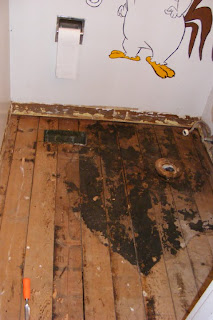There are times when painting can be fun. Then there is painting the extremely small, barely able to fit one person, half bathroom.
I take issue with paint that declares to be “One Coat” as it never only takes one coat to cover. Ever. Maybe if you were covering white on white it’d do alright, but that is a rather rare exception. But that is just a pet peeve of mine I suppose, as I’m certain to be the only person who has ever been flusterbated over it. But what angers me more is using quality paint and a supposedly professional quality paintbrush to cut it, and it yields crappier results than substandard paint and a cheap disposable paintbrush. Then again, sometimes you just have to have faith that both are actually doing their intended jobs, even if it doesn’t look like it at first.
While cutting in with a new angled brush, as my favorite angled brush somehow got lost in our church’s youth room spruce up, I could not for the life of me get the brush strokes to go away, no matter how heavy or light handed I was while painting. So I left a section alone, and continued to cut in the rest in crosshatches to get the most coverage possible, when I noticed the brush strokes had disappeared as the paint slowly spread to fill in the tiny gaps. Figures, as by the time I’d found that out I was nearly done cutting in a majority of the bathroom. I’d already planned on doing two coats, but really wanted to make sure the first one was on really well for the best possible coverage. Oh well, live and learn I guess.
After all the cutting in was completed it was time to move on to the rolling. Easy, right? Hehehe… okay, so the rolling was rather easy, except for the fact that the roller soaked up so much paint that a few areas had to be stippled with a flat brush, but I was ready to fix this and had the brush within reach. I also needed the brush to get into the small areas the roller couldn’t, and painted in those areas after stippling. What is stippling, you ask? Simply put, it is taking the tip of, say, a 4” flat brush that is at least half an inch thick and gently dotting the surface to blend the paint drips away. This usually creates the same effect as rolling. Just be careful that you are only lightly dotting the surface and not pushing all the way through, but then again, if you do, it can just be painted over. No biggie.
So last night I got the first coat done, as it took a lot longer for the primer to dry over all of the Loony Tunes characters than originally anticipated, probably because of the gross wetness that has been our spring so far. This made me incredibly sad to have to say goodbye, mostly to Marvin the Martian. We were hoping to have the paint and at least the backer board in place by yesterday, but alas, perhaps today will be the day. And maybe tile too.
Let’s Get Ready for Some Quilty Fun!
1 day ago










